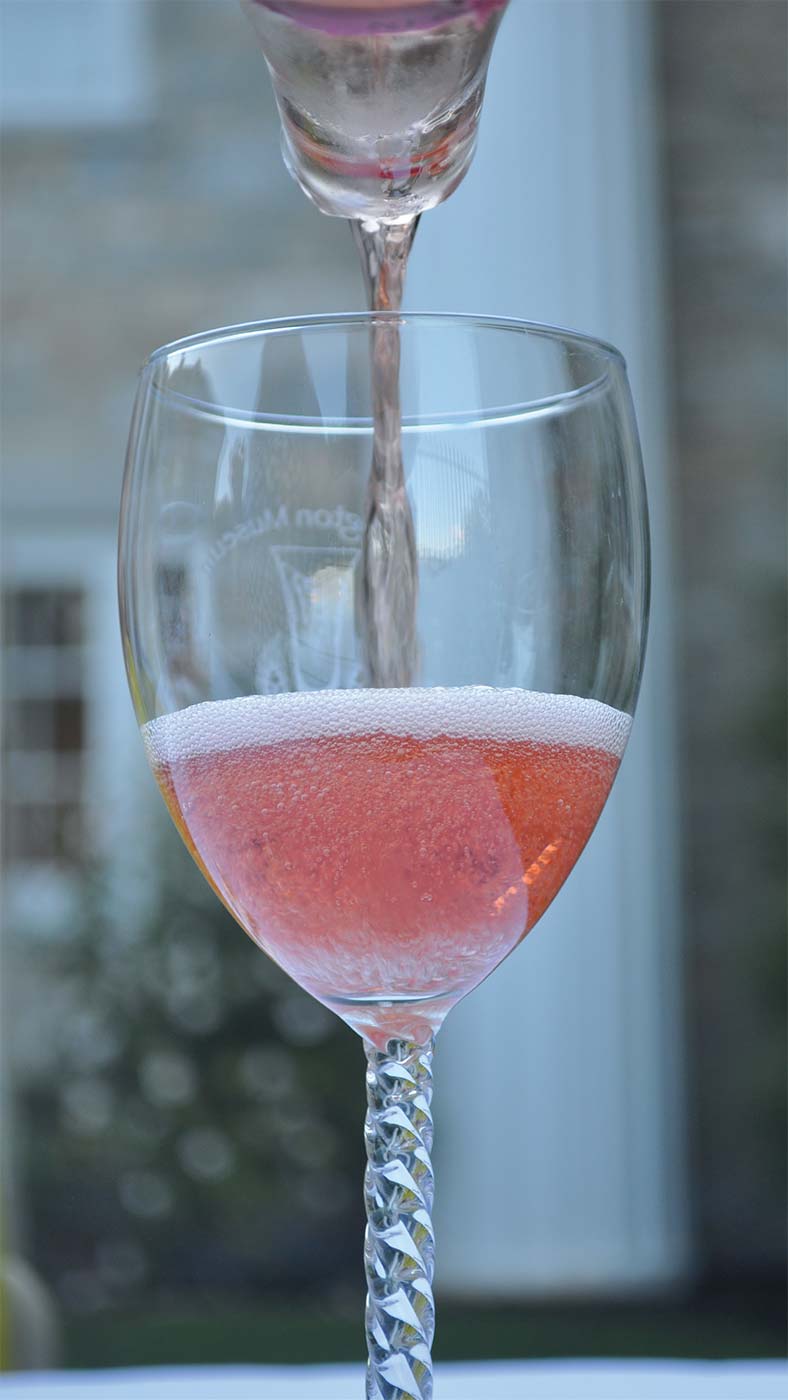Wine and Wit ...and Pairings that Will Make a Hit
“Got a fancy glass decanter? Very nice. Don’t have one? Neither do I! Decanting wine, or pouring it into an intermediary vessel between the bottle and glass, is a hot-button issue among wine lovers.” –Nancy Koziol
Wine. It’s a mystery, eh? In my circle, we call it “the science of exceptions” because the rules rarely apply. Here’s your permission to forget everything you think you need to know and to get a handle on what actually matters when it comes to enjoying wine.
Storage Matters More Than Anything Else
Proper storage is the most important thing to know about wine. Nothing else matters if your wine is flawed, and storage is usually the culprit for a bad bottle.
Light (both natural and artificial), temperature swings, vibration, and movement are enemies of your wine. The most important thing your wine needs is consistency. Keep it in a dark place at a consistent temperature where it’s not going to get knocked around or moved. If it’s got a cork, lay the bottle horizontally.
The Dos and Don’ts of Decanting
Got a fancy glass decanter? Very nice. Don’t have one? Neither do I! Decanting wine, or pouring it into an intermediary vessel between the bottle and glass, is a hot-button issue among wine lovers.
You’ve surely noticed that wine often hits its stride after the first few sips. When oxygen is introduced to wine it “opens” and the phenolic compounds (what gives wine its aromas) are more accessible to your nose. For this reason, it’s never a bad idea to let a wine breathe. Just opening it and letting it sit, though, isn’t letting it breathe. You need to increase the surface area of the wine coming into contact with the air and the best way to do that is by sloshing it into a decanter. That’s right: slosh it. Open the bottle, turn it horizontal, and pour it against the side so that the wine cascades. When you see the grit in the neck (or in the wine), stop. You’ll have maybe an inch of wine left in the bottle. Swirl the decanter before and between pours and you’ll open it up nicely.
Unfortunately, this leaves you with a dirty decanter. And decanters are difficult to clean. Curves and twists are perfect places for mineral deposits to develop when the decanter is drying. They can also get musty. If you do use a decanter, use a hair dryer set on “cool” to blow air out of the bends.
Want to skip this production? Pour the wine into a clean blender, give it a zhuzh, and enjoy your glass. Sometimes called hyper-decanting, this is a quick and easy way to oxygenate a bigger red wine. Trust me.

Photo: Donald Gruener
Screw Caps
Back in the 1990s, if someone showed up for dinner with a screw cap wine, it meant they stopped at a gas station. It also meant they didn’t like you much. These days, though, this isn’t the case. Screw caps are being used by everyone! Cheaper to produce and more sustainable and reliable than corks, screw caps are ubiquitous. That said, there are a few things to know. Wines with a screw cap are meant to be drunk young. Drink them right away. If you get an Argentinian malbec with a screw cap, the winemaker is letting you know they want you to drink the wine upon purchasing it versus cellaring it.
There’s plenty to know about wine, which is why becoming an expert takes years of hair-pulling coursework. Fortunately, there’s very little you actually need to know to enjoy all the wine the world has to offer. Just make sure you’re storing it right!

Cheurlin Zero Dosage Champagne being poured at a couch + cork rosé tasting at Bennington Museum
Pairing tips…
What grows together goes together
By region/area
BURGUNDY
mustard, anise, parsley, white pepper, nutmeg, ginger
PROVENCE
herbs de Provence
THE RHÔNE
anise, fennel, lavender, oregano, cocoa
TUSCANY
basil, garlic, marjoram, oregano, rosemary, thyme
SICILY
fennel, mint, marjoram, oregano, rosemary, thyme, sage
RIOJA
bay leaf, parsley, paprika, saffron
PORTUGAL
cinnamon, cumin, clove/allspice, nutmeg, pepper (black and white)

By most popular wines
Cabernet Sauvignon
SPICES + HERBS
fennel, anise, rosemary, thyme, black pepper
CHEESE
Brie, Camembert, Comté
PRODUCE
pear, plum, dried fruit, root vegetables, eggplant
PROTEIN
pork, chicken, beef
DISHES
coq au vin, shepherd’s pie, asparagus risotto, bacon cheeseburger, seekh kabob, red wine–braised short ribs
Pinot Noir
SPICES + HERBS
anise, cumin
CHEESE
Gruyère, mascarpone
PRODUCE
mushrooms
PROTEIN
pork, chicken (dark meat), cured meats, salmon, lamb
DISHES
squash soup, roasted veggies/hazelnuts, mushroom risotto with peas (vegetarian), coq au vin, Yang Rou Chuan (California Pinot), graham crackers and mascarpone
Sauvignon Blanc
SPICES + HERBS
garlic, pesto, mint, rosemary, thyme, dill, caper, bay leaf, basil, cilantro, chive, green olive
CHEESE
feta, chèvre, goat cheese, burrata, goat gouda, crème fraîche, sour cream, Parmesan, ricotta
PRODUCE
cucumber, zucchini, green peas, tomato, artichoke, bell pepper, arugula, leek, eggplant, green beans
MEAT
chicken, halibut, crab, lobster, haddock, bass, cod, salmon, calamari, turkey, pork
DISHES
tarteletter, Asian pear & arugula salad with goat cheese, lobster fettuccine in herbed cream sauce
Riesling
SPICES + HERBS
allspice, capers, coriander, cumin, curry, dill, ginger, green cardamom, green onion, lime and lemon zests, Sichuan pepper, tarragon, turmeric, white pepper, za’atar
CHEESE
farmers, ricotta, young pecorino, chèvre
PRODUCE
asparagus, bell pepper, bitter greens, coconut, potatoes
PROTEIN
clams, shrimp, halibut, trout, turkey, pork, veal
DISHES
pan-seared halibut with lemon beurre blanc and tartar potato puree; seared pork chops with caper sauce; leek, ricotta and Gruyère tart





